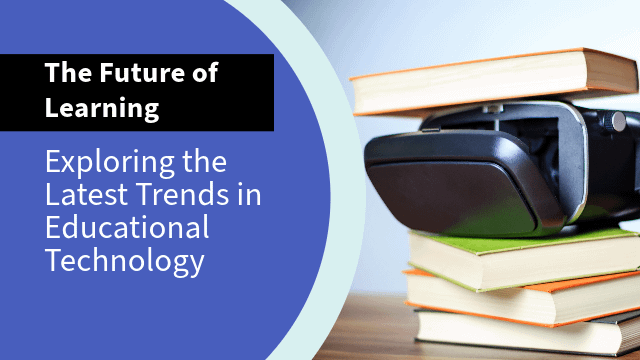Education is a dynamic field, constantly evolving to meet the changing needs of students and society. In recent years, the integration of technology into education has been at the forefront of these changes. This article delves into the latest trends in educational technology, providing insights and information on how they are transforming the landscape of learning. We will explore various aspects of this fascinating journey, from augmented reality in the classroom to the rise of personalized learning platforms. So, let’s embark on this enlightening exploration of the future of learning.
Embracing Technological Advancements
The integration of technology in education has come a long way. Today, it’s not just about using computers in the classroom; it’s about harnessing the power of Artificial Intelligence (AI), Virtual Reality (VR), and other cutting-edge technologies. These innovations are making learning more engaging and effective.
Personalized Learning Platforms
One of the most remarkable trends in educational technology is the development of personalized learning platforms. These platforms use AI algorithms to tailor learning materials and activities to individual students. It’s like having a personal tutor who understands your strengths and weaknesses, providing a customized learning experience.
Augmented Reality (AR) and Virtual Reality (VR) in Education
AR and VR are revolutionizing education by creating immersive learning environments. Students can explore ancient civilizations, travel through the human body, or conduct virtual science experiments. These technologies bring subjects to life, making learning fun and memorable.
Gamification of Learning
Gamification is another exciting trend. Educational games and apps turn learning into an adventure. They motivate students to solve problems, answer questions, and achieve milestones. Gamification fosters a sense of accomplishment and keeps students engaged.
Online Collaboration and Communication
With the rise of e-learning, collaboration and communication tools have become crucial. Video conferencing, discussion forums, and online project management platforms enable students and educators to interact seamlessly, regardless of geographical boundaries.
The Role of Big Data
Big Data analytics are helping educators make data-driven decisions. By analyzing student performance and learning patterns, educators can identify areas for improvement and tailor their teaching strategies accordingly.
Inclusivity and Accessibility
Technology is breaking down barriers for students with disabilities. Innovative tools, such as screen readers and speech-to-text software, are making education more accessible to all.
Teacher Empowerment
Educators are benefiting from technology too. They have access to resources, professional development, and collaboration opportunities online. This empowers teachers to stay updated with the latest pedagogical trends.
Sustainable Learning
The digital shift also contributes to sustainability. E-textbooks, online resources, and reduced paper usage are more eco-friendly. Educational institutions are increasingly adopting sustainable practices.
Global Learning Communities
The internet connects students and educators globally. This creates opportunities for cross-cultural learning and collaboration, preparing students for a globalized world.
Bridging the Digital Divide
Efforts are underway to bridge the digital divide and ensure that all students have access to technology and the internet. Initiatives like providing laptops and internet connectivity to underserved communities are making education more equitable.
Challenges and Concerns
While educational technology offers tremendous benefits, it also presents challenges. Issues such as data privacy, screen time, and maintaining student engagement must be addressed responsibly.
Frequently Asked Questions
How are personalized learning platforms beneficial?
Personalized learning platforms adapt to each student’s needs, enhancing their learning experience and improving outcomes.
What are the advantages of gamification in education?
Gamification makes learning enjoyable, motivates students, and fosters problem-solving skills.
How is technology making education more accessible?
Technology provides tools like screen readers and speech-to-text software, enabling students with disabilities to participate fully.
What role does big data play in education?
Big data helps educators analyze student performance and tailor teaching strategies for better results.
How can technology bridge the digital divide?
Efforts like providing laptops and internet access to underserved communities help ensure equitable access to education.
What are the challenges of educational technology?
Challenges include data privacy concerns, excessive screen time, and the need to maintain student engagement.
Conclusion
The future of learning is bright and promising, thanks to the continuous evolution of educational technology. As we embrace these trends and overcome the challenges, we move closer to providing high-quality, accessible education for all. So, stay curious and keep exploring the latest trends in educational technology—it’s a journey that promises to transform the way we learn and teach.

